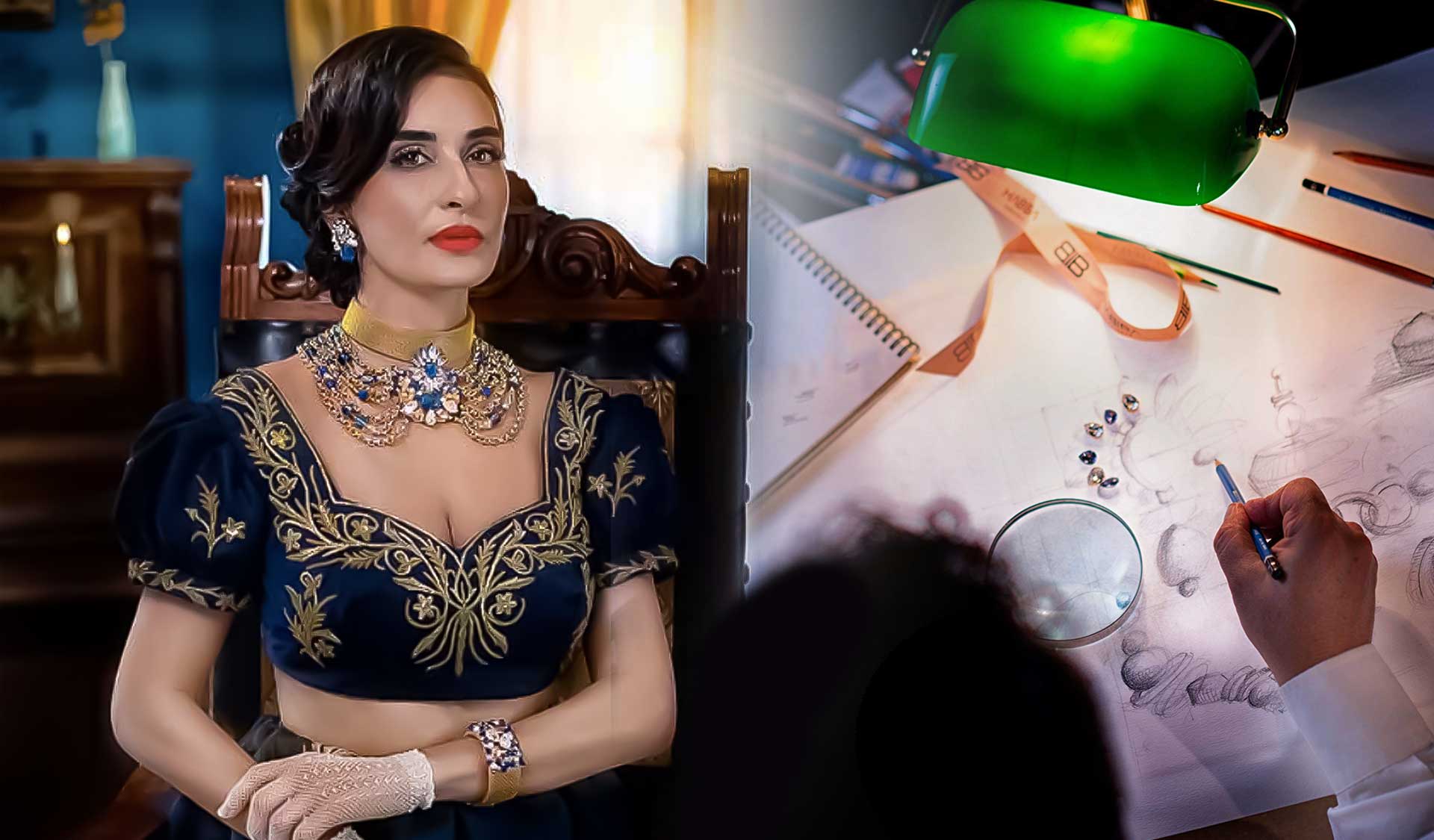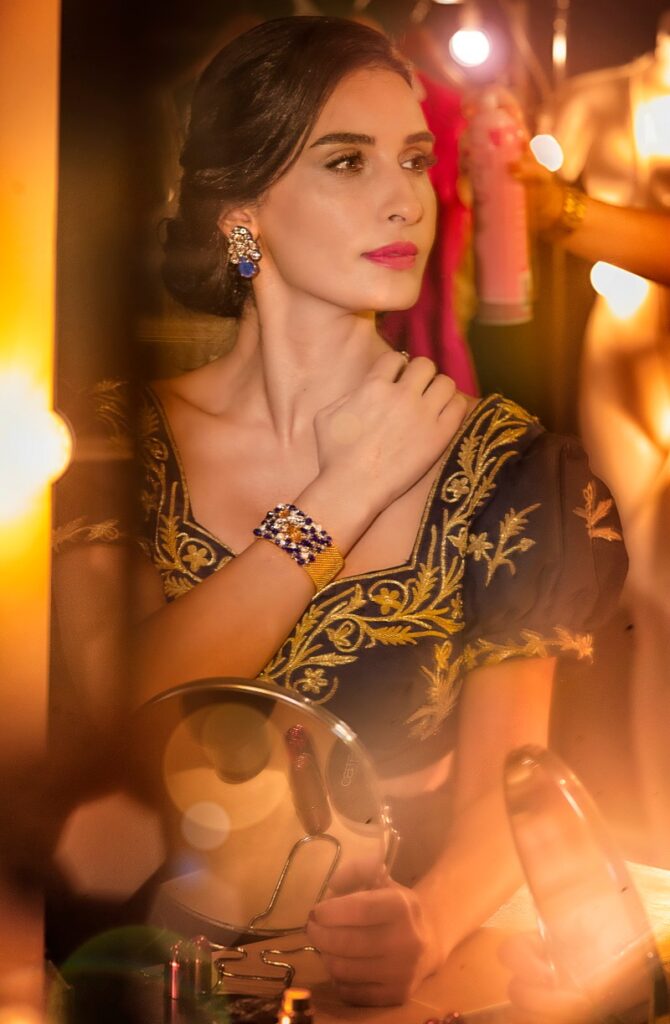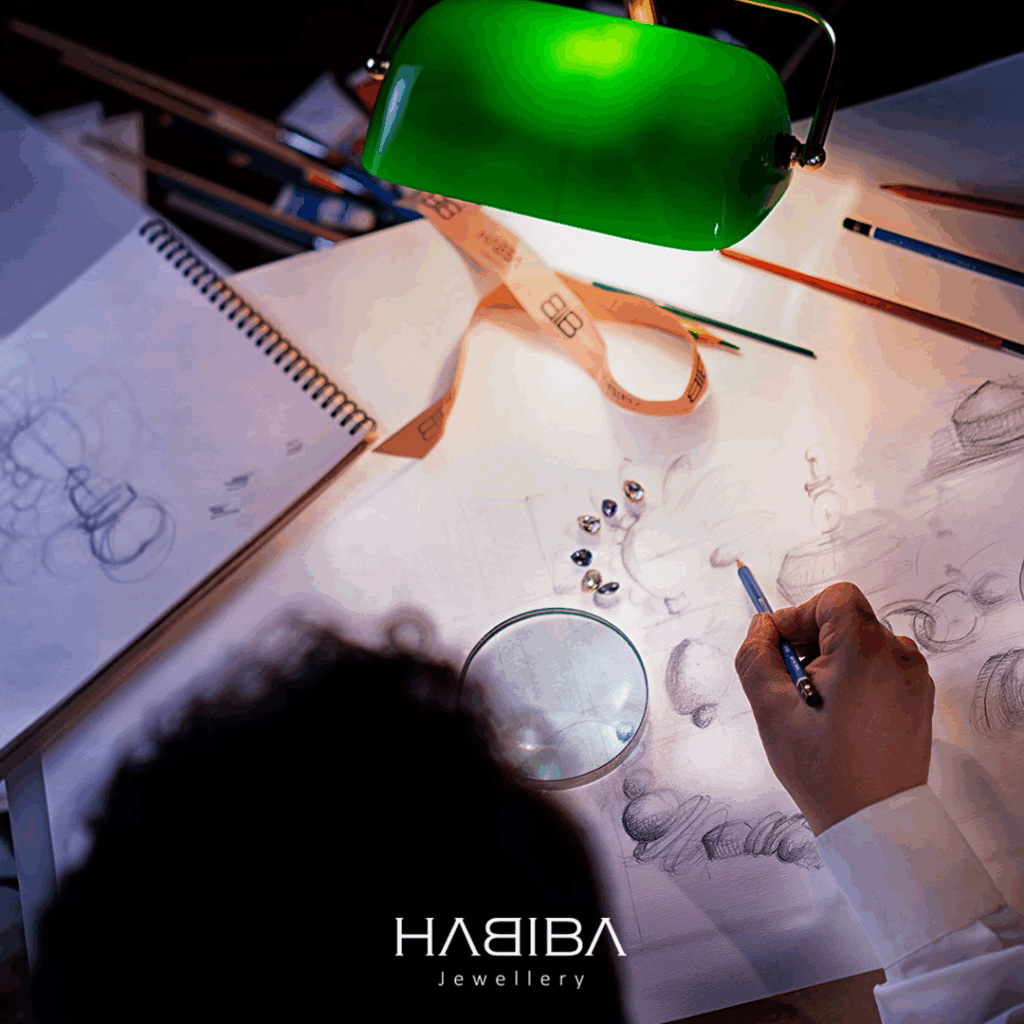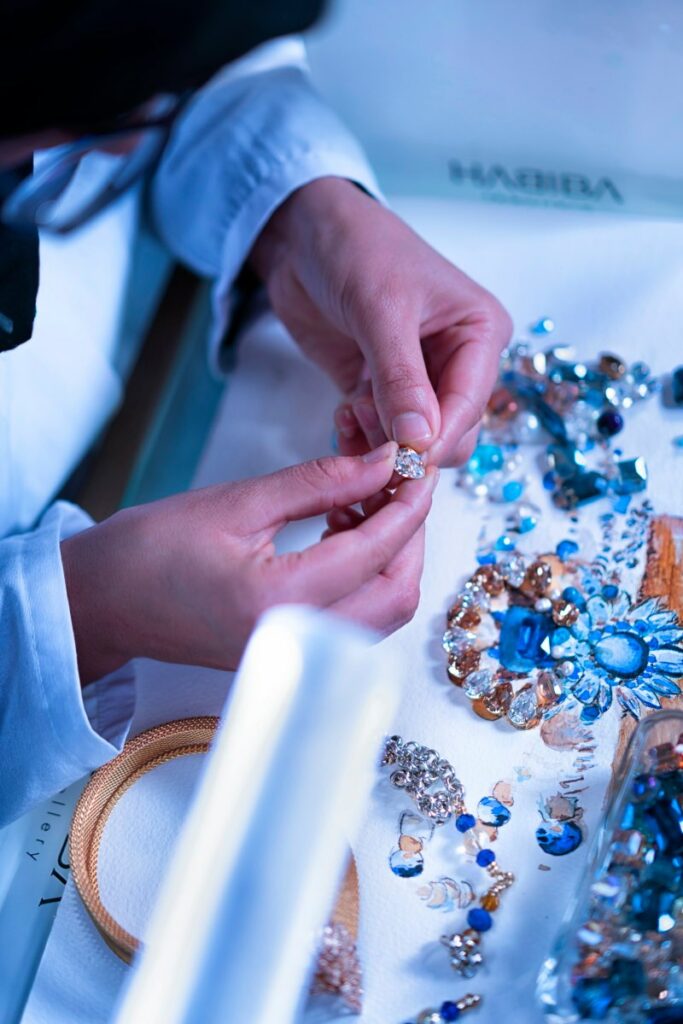KMAR EL BAYA
When Habiba Tells the Story of Tunisian Princesses
For this special issue dedicated to Tunisian Cinema, actress Fatma Nasser stepped into the timeless world of fashion through the lens of both camera and photography. And it is HABIBA Jewellery that narrates, through a series of episodes, the extraordinary destinies of Tunisian princesses who left their mark on history, adorning the beautiful actress with creations inspired by the legacy of these remarkable women.
In this first episode, the spotlight is on Lella Kmar Beya, a princess remembered not only for her beauty, but above all for the profound and positive influence she exerted over her three successive husbands.
Wearing a 70-year-old Fùta and Blùza Sarraji, Fatma Nasser was gifted with a jewel specially designed by HABIBA Jewellery to match this collector’s attire, allowing her to embody the role of a Beya who shaped history.
Like Lella Kmar, the odalisque who drew her strength from intelligence and wise management of both private and public affairs, Fatma Nasser brings to life the story of a woman who married three of the last Husseinite Beys of Tunis.
A true journey through time, reviving a glorious chapter of our history — one where the public images of these women were exceedingly rare, yet their legacy remains timeless.

A true modern-day princess, Fatma Nasser was draped in the splendid Fùta and Blùza Sarraji, whose luxurious embroidery was once used to adorn horse saddles. To enrich this tale even further, HABIBA Jewellery imagined and created a unique piece for the occasion. The design draws inspiration from the region of El Kef, birthplace of the first wife of the founder of the Husseinite dynasty. Its circular choker evokes the Table of Jugurtha, a monumental plateau symbolizing Kef’s heritage. The pearls allude to the intelligence of women, embodied by Lella Kmar, while the central medallion recalls the beylical coat of arms.


